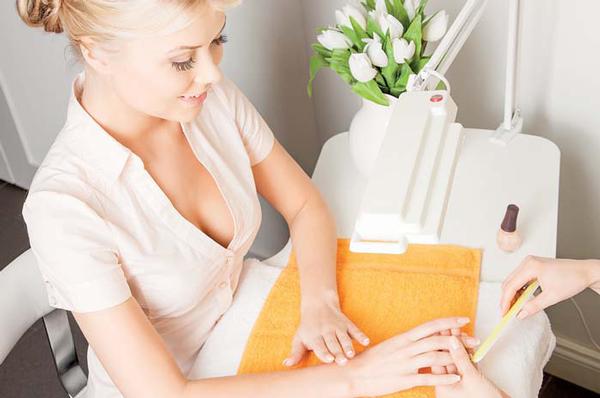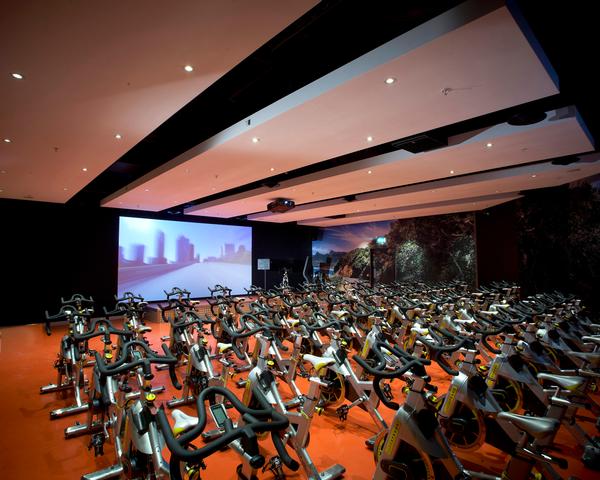
|
 |
Health Club Management Handbook - Watch this space

Trends

|
|
| Watch this space
|

The Health and Wellness Knowledge Venturing team at global foresights firm The Futures Company share their thoughts on the hottest trends impacting the spa and wellness industry worldwide
|
|
|
 |

The need for affordable indulgence |
 |
Amy Tomkins
Senior consultant
The Futures Company
A holistic approach to wellbeing is innate in millennials and something they’re reluctant to sacrifice, despite the economic uncertainty and financial constraints that surround them.
Eighteen- to 33-year-olds in western Europe have grown up accustomed to a society where it’s acceptable to focus on yourself as an individual and dedicate time to your own mental and emotional wellbeing. Yet times are tough for this group, particularly at the younger end of the age spectrum, as they attempt to establish themselves on the career ladder against a backdrop of austerity. They’re increasingly worried about their future and are having to plan for the long-term in a way that previous generations managed to avoid. Forty-three per cent of 18- to 25-year-olds in the UK agreed in our 2012 Global Monitor study that over the next 12 months, they’ll be planning for the worst financially – a stark contrast to the optimism of previous generations at this age. Emotional wellbeing is under threat as anxiety over job security, debt and future prospects takes hold.
Should the spa industry be worried? Reassuringly, in this climate, little luxuries are more important than ever. Whether it’s a cup of their favourite coffee or a weekly music download, millennials are unwilling to sacrifice the boosts that help them to maintain an even keel and deal with the pressures they’re under. The spa industry should take note – luxury treatments will be out of budget, but affordable, everyday treats such as express manicures or day passes to use the spa, are what this group craves. If the spa industry can offer a range of treatments that meet a £10-20 (US$16-32, E12-24) budget, there’s an opportunity to reach out to this younger audience.
| |


|
| Photo: © LEV DOLGACHOV/SHUTTERSTOCK.COM |

Everyday treats such as an express manicure are just what people in this group need |
|
|
 |

Gamification and the spa industry |
 |
Eloise Keightley
Consultant
The Futures Company
Spas could use the carrot and stick approach that’s prevalent in the gamification of the health and fitness industry, to improve loyalty schemes. An app designed to reward clients for purchases would replace physical loyalty cards, for example.
Businesses could incentivise clients – especially those who don’t make regular visits – to return for more treatments by offering points to trade for discounted or free treatments and trials, as well as spa-related online games. Tracking features, which are common among apps focused on more goal-oriented aspects of health such as diet and exercise, could be used to help clients record and comment on treatments they’ve enjoyed.
Social gaming offers a means of enriching client relationships. Facebook has already been used by many brands looking to better educate and engage with clients and staff through social gaming, while Clarins’ Spa Life game (see Spa Business 12/2 p80), allows Facebook users to manage virtual spa clients in search of treatments to redeem points for Clarins products. More recently, pharmaceutical group Boehringer Ingelheim created Syrum, a Facebook game in which players must solve global pandemics and diseases by discovering cures, creating a stable drug, and then testing it through clinical trials. It’s easy to imagine how this type of immersive social gaming might be used to educate spa clients about treatments – especially treatments and technologies that are new to the market. Gaming can help to deliver a higher level of client engagement which can only benefit the industry and consumers.
| |


|

Clarins is already using Facebook and gaming to enrich client relationships |
|
|
 |

The middle class opportunity in Brazil |
 |
Rebeca Dreicon
Director
The Futures Company
Brazilian poet Vinicius de Moraes made an apt reflection on the country’s culture when he said “May ugly women forgive me, but beauty is fundamental”. The desire to look good has deep cultural roots and means that Brazil has long been fertile ground for the health and beauty industry. The cosmetic industry is flourishing and Brazil is the second largest plastic surgery market in the world behind the US.
Brazil has experienced rapid economic growth in the last decade, overtaking the UK in 2011 to become the sixth largest global economy in terms of GDP. This growth is amplifying the aspiration to be beautiful. Optimistic consumers are keen to stand out and display their success in life through their appearance. Yet the spa industry appears to be missing a trick in connecting with increasingly affluent middle-class consumers who have huge purchasing power. Brazil’s middle class was expected to spend BRL1 trillion (US$490bn, E369bn, £306bn) in 2012 with 52 per cent of the 1.9m population defined as middle class compared with 38 per cent 11 years ago.
While the spa industry has seen rapid growth over the last five years, with an increase from 400 to 1,000 locations, spa culture has not been mainstreamed. There’s still a perception that they’re places for wealthy, high-profile people rather than for normal people looking for moments of indulgence. Engagement is hampered by a lack of clarity around the benefits and services on offer. At a recent spa and natural products exhibition, 10 per cent of consumers said the biggest barrier to them using spas was lack of awareness and understanding.
Brazil is ripe for growth, but only if spa culture becomes more accessible. Appearance-centric consumers with increasing disposable incomes are prime targets, but without clearer communication on what they stand to gain from a spa visit, a valuable opportunity could be missed.
|
|

|
Louise Kennedy
consultant
We’re living hectic modern lives and often tensely balancing work and leisure time. More than ever, we’re seeing a rise in instances of stress. According to the National Health Service in the UK, work-related stress, which can negatively affect mental wellbeing by driving down self-esteem and positivity, has soared by 40 per cent since 2005.
This change is driving consumers to take greater responsibility for their mental wellbeing in order to maintain a positive outlook. Mental health – once stigmatised and seen as complex – is emerging as a concern on a par with physical wellbeing.
We’re seeing an increase in more complementary holistic treatments, such as mindful meditation, that aim to promote mental wellbeing. One example is Zen Sound Therapy – offered by the Stowe Mountain Lodge in the US – which aims to reduce anxiety through music therapy. Another, the AlphaSphere multi-sensory relaxation bed by Viennese artist sha, encases spa-goers in rhythms and vibrations to bring about physical and mental relaxation.
The world of spa is emerging as an accessible way for people to take time for themselves, invigorate their senses and improve their mental outlook. From massages to manicures, spas are boosting self-esteem and mental wellbeing. According to the ISPA 2012 US Spa Industry Study, visits were up 4.1 per cent in 2011 (see SB12/4 p40).
Time pressures can mean people have less time to devote to their mental wellbeing, despite recognising it as a concern. We’re seeing them embracing simple spa-type treatments in the home, from masks and facials to hot baths and scented candles that help achieve a positive mental balance.
In the future we’ll see more people taking responsibility for their mental health by embracing the world of the spa.
| |


|

The sensory Alpha-Sphere could help with the growing need for mental wellbeing |
|
|
 |

The rise of the bio-citizen |
 |
Casey Ferrell
Senior consultant
When it comes to health, some people find navigating the myriad of choices confusing and intimidating. They find their way through the complexity by relying on networks of advisers and professionals, or seeking advice from peers in similar situations.
But people are becoming increasingly willing to share health information with those outside their circle of friends and family. For example, Facebook recently included health updates – from broken bones to illnesses – to its list of life events.
Some consumers are forming social affinities around health and biological identities. They are ‘bio-citizens’ – people who join social networks, on and offline, based on shared interest in health concerns – and are generating and sharing specialised scientific and medical knowledge of their conditions. They’re becoming experts in their own right and are increasingly influential.
Their impact is likely to be felt, as user-generated content on health affinity websites and blogs spurs collective action by tapping into the collective intelligence of social networks for health. This will redefine healthcare solutions in the future.
As engaged and informed consumers share their private health information they will expect spa and wellness solutions to be more innovative and flexible, tailoring the services to meet their specific needs.
| |


|
| Photo: © AFRICA STUDIO/SHUTTERSTOCK.COM |

Bio-citizens join social networks based on shared health concerns |
|
|
 |

The rising need for urban sanctuaries |
 |
Amy Smyth
Senior consultant
Currently, 51 per cent of the world’s population live in urban environments, compared with 30 per cent in 1950, and in Europe more than two-thirds of people live in towns and cities.
Outdoor places to exercise are increasingly threatened and air pollution can make it unpleasant and even a threat to our health to exercise outdoors. In some cases, people are too afraid to exercise for fear of crime and gangs. For these reasons people are seeking a safe and healthy space to retreat to for exercise.
Health clubs are addressing this by looking at innovative ways of bringing the outside indoors, with some creating the sensations of exercising outdoors by doing things like increasing natural light and projecting images of natural scenery. The Virgin Active health club in Aldersgate, London, for example, has a group cycling studio with a floor to ceiling projection screen and up to 150 outdoor image videos (pictured).
But this trend isn’t just interesting for gyms – it could lead to a new opportunity for spas, as people start to view them as more of an essential part of managing their health, rather than a luxury. As urbanisation continues people will increasingly need a sanctuary to escape to.
| |


|

Outdoor places to exercise are under threat, so gyms are recreating them |
|
|

|
Radha Patel
Associate director
Today, there are 1.5 billion people aged over 50 and this is set to rise to 1.9 billion by 2020. For the first time, the world’s older population will be the fastest growing age group on the planet.
Older consumers are not necessarily bound by life-stage stereotypes. They’re not only looking for solutions that will help them better manage the health conditions they have, but also to slow or prevent age-related decline in their bodies and minds.
From beauty creams and pills to Chinese placenta medicines and even functional drinks that prevent the early onset of Alzheimer’s, the market for anti-ageing products has been rapidly expanding. At its most extreme it includes treatments such as replacing healthy joints with artificial ones to prevent joint deterioration in the first place.
However, these solutions are not for everyone and many are looking for holistic treatments that can be integrated into their lifestyles. The spa industry is responding with anti-ageing treatments.
Healthy ageing spa holidays are being offered to consumers wanting to stay one step ahead of the ageing process. These feature specially designed programmes that combine nutritional advice; tests to assess functional health and metabolism; anti-ageing treatments; and ancient therapies of yoga, ayurveda and meditation to assist the renewal process.
Spas should promote youthfulness and vitality with treatments that prevent premature ageing and disease and are simple enough to replicate at home to ensure that the benefits are ongoing.
|
|
 |

About The Futures Company |
 |
The Futures Company is a strategic insight and innovation consultancy, with particular expertise in futures and foresight work. The company has teams in the US, Mexico, Brazil, UK and Argentina and partnerships in China, India and Poland. It was formed in 2008 by the merger of two businesses – Europe’s Henley Centre HeadlightVision and US-based Yankelovich. It’s a division of Kantar, the insight arm of WPP. By exploring the future needs, motivations and behaviours of consumers, and the broader dynamics shaping the marketplace, The Futures Company unlocks new sources of growth for its clients.
WEB: www.thefuturescompany.com TWITTER: @FuturesCo
From Spa Business Issue 3 2012, p46
|
|
 |
| Originally published in Leisure Handbook 2014 edition
|
|
 |
|
